Saudi Arabia historical sites to visit : religious monuments, archaeological areas, cultural heritage
Saudi Arabia contains a wide range of historical locations spanning multiple periods, from Islamic holy sites to pre-Islamic archaeological remains. The country encompasses both religious destinations that draw millions of Muslim pilgrims annually and ancient settlements that reveal trade networks and civilizations dating back thousands of years. Among the most significant are the holy cities of Mecca and Medina, the Nabatean tombs at Al-Ula, and prehistoric rock art in various desert regions. The collection includes sacred sites such as the Great Mosque in Mecca with its Kaaba and Zamzam well, the Prophet's Mosque in Medina, and pilgrimage locations like Mount Arafat and the ritual grounds at Mina. Archaeological sites preserve evidence of earlier inhabitants, including Madain Salih with its 111 rock-cut Nabatean tombs from the first century, the petroglyphs of Hail dating back 10,000 years, and the sandstone formations of Al-Ula. Urban centers like Riyadh feature the Masmak Fortress from 1865, while Jeddah's historic port district displays traditional coral stone architecture. Together, these locations document the religious, commercial, and cultural development of the Arabian Peninsula across millennia.
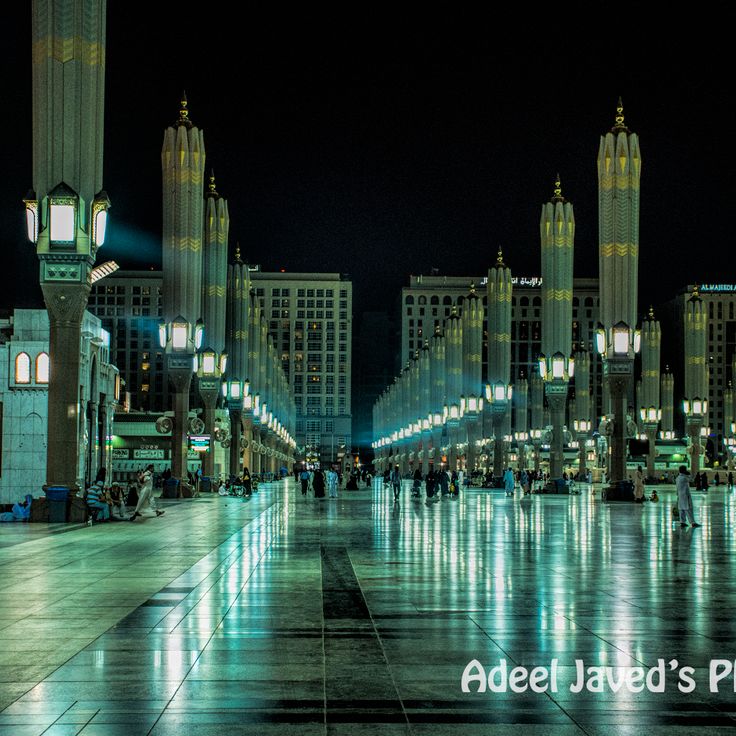
Medina, Saudi Arabia
MedinaThis city is the second holiest site in Islam after Mecca and houses the Prophet's Mosque, which contains the tomb of Prophet Muhammad. Medina played a central role in early Islamic history when Muhammad and his followers sought refuge here in 622 CE. The mosque has been expanded multiple times over the centuries and now accommodates over one million worshippers. Beyond religious structures, this city encompasses several historical sites from the formative period of Islam, including ancient cemeteries and prayer locations. Access is restricted to Muslims only.
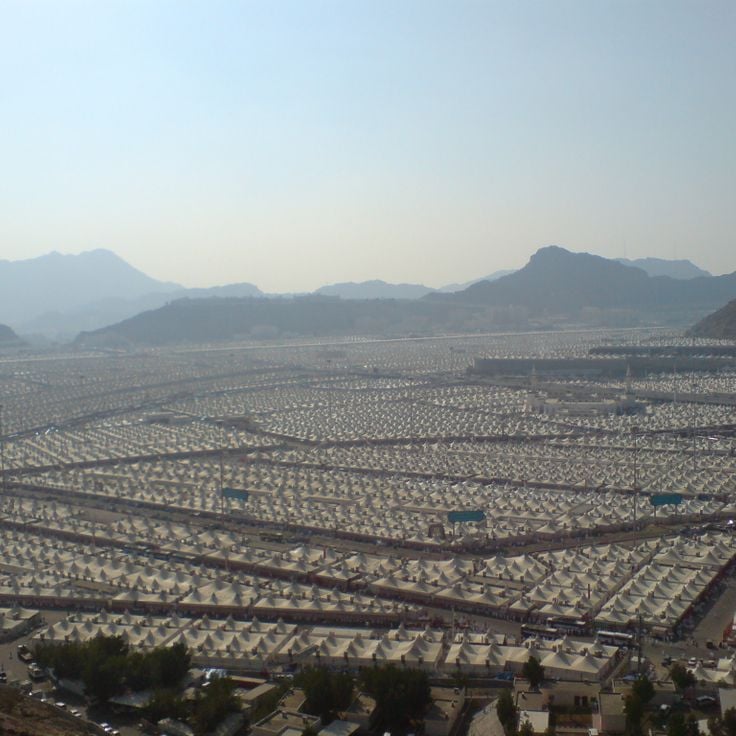
Mecca, Saudi Arabia
MinaThis desert area near Mecca serves as a temporary accommodation site for millions of Muslim pilgrims during the Hajj season. Mina is an integral part of the Hajj rituals, where worshippers perform the symbolic stoning of the Jamarat pillars, representing the triumph over temptation. The area features extensive tent camps and infrastructure specifically developed to accommodate the large numbers of pilgrims who gather here annually. As one of the holy sites in Islam, Mina plays a central role in the religious practices required to complete the pilgrimage.
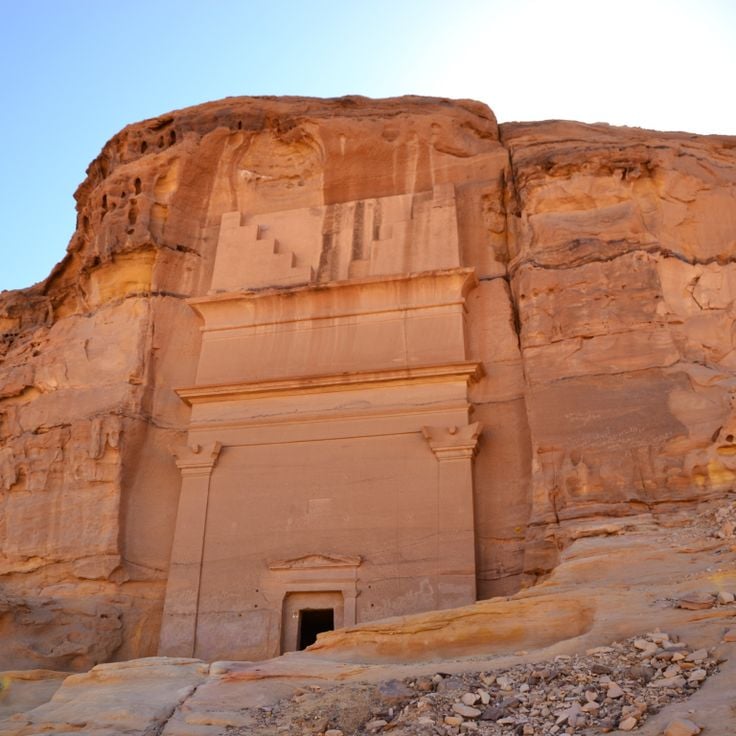
Al-Ula, Saudi Arabia
Madain SalihMadain Salih is the largest preserved Nabatean city south of Petra, featuring 111 monumental rock-cut tombs with decorated facades carved into sandstone cliffs between the 1st century BC and the 1st century AD. This ancient site includes a religious area with ritual places, remains of Nabatean irrigation systems with cisterns and wells, and inscriptions in Nabatean and ancient North Arabian scripts. The archaeological site served as an important caravan station on the incense trade route connecting the Arabian Peninsula with the Mediterranean region.
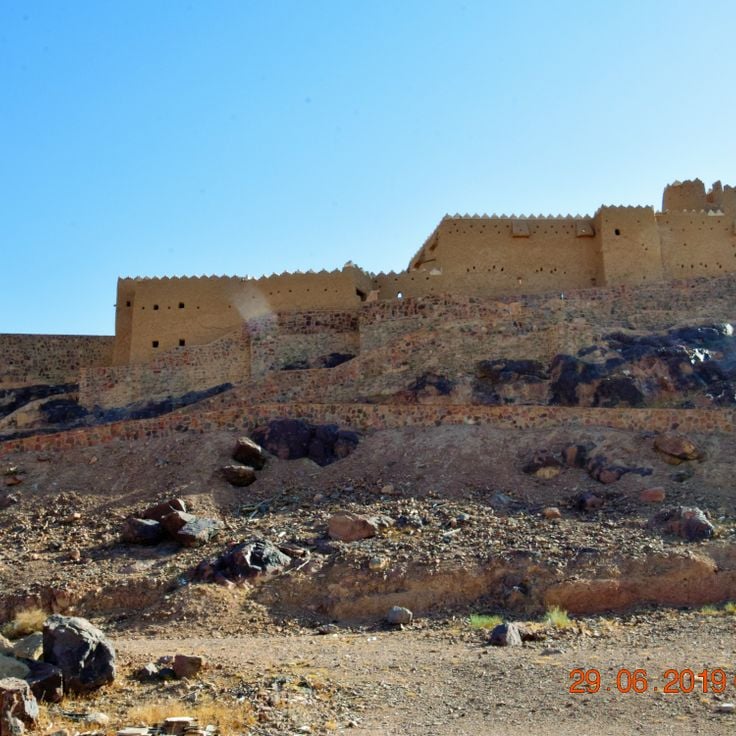
Hail, Saudi Arabia
Rock Art of HailThis collection of prehistoric rock art in Hail dates back up to 10,000 years and depicts hunting scenes, animal figures, and aspects of daily life of early inhabitants of the Arabian Peninsula. The engravings carved into stone document the cultural development and ways of life of people who inhabited this region over millennia. These archaeological remains represent some of the most important examples of prehistoric art in Saudi Arabia and complement the country's historical heritage, which spans from the holy cities of Mecca and Medina to the Nabatean ruins of Al-Ula.
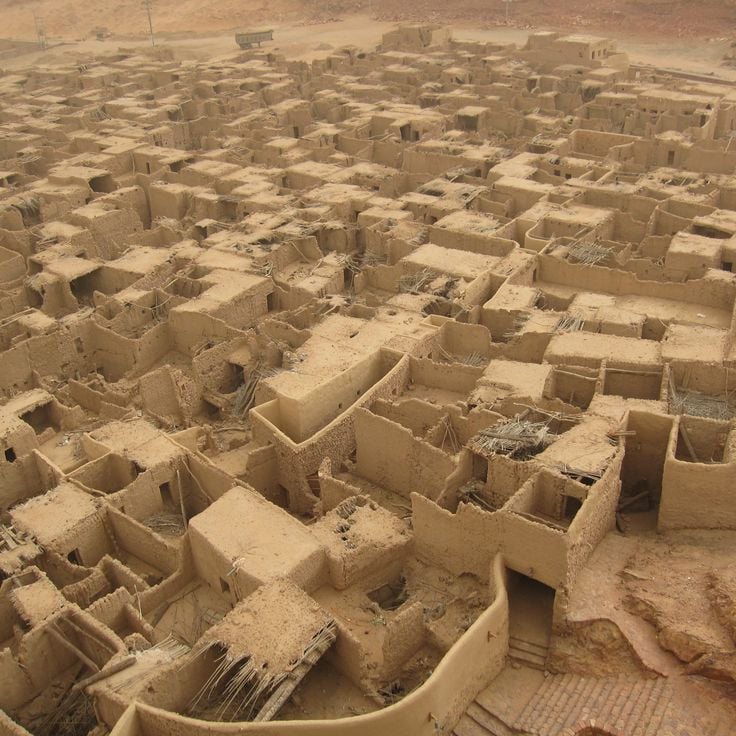
Al-Ula, Saudi Arabia
Al-UlaAl-Ula is a desert valley in northwestern Saudi Arabia containing hundreds of rock-cut tombs from the Nabatean era. This archaeological site includes the ruins of Hegra, also known as Madain Salih, featuring monumental facades and ancient inscriptions. The region presents red sandstone formations and evidence of Nabatean, Roman, and Islamic occupation, making Al-Ula an important component of Saudi Arabia's historical and cultural heritage alongside the holy cities of Mecca and Medina.
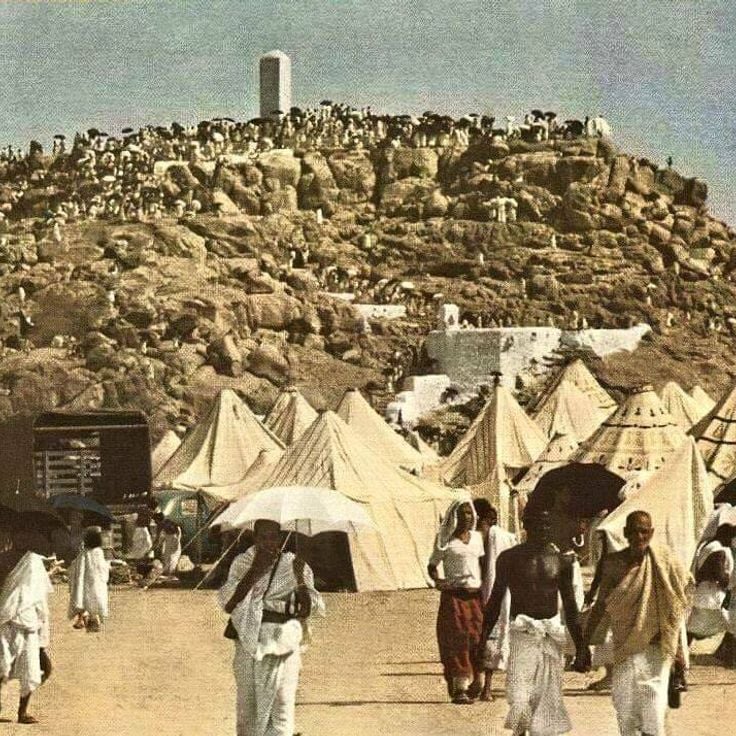
Mecca, Saudi Arabia
Mount ArafatThis granite hill rises to 230 feet (70 meters) some 12 miles (20 kilometers) from Mecca and forms a central location for pilgrims during the Hajj. Mount Arafat marks the most important day of the pilgrimage, when believers remain in prayer from dawn until sunset. The plain surrounding the hill can accommodate several million people who gather here to fulfill their religious obligations. As a significant religious site in Saudi Arabia, this location belongs among the holy places that define the spiritual heritage of the country.
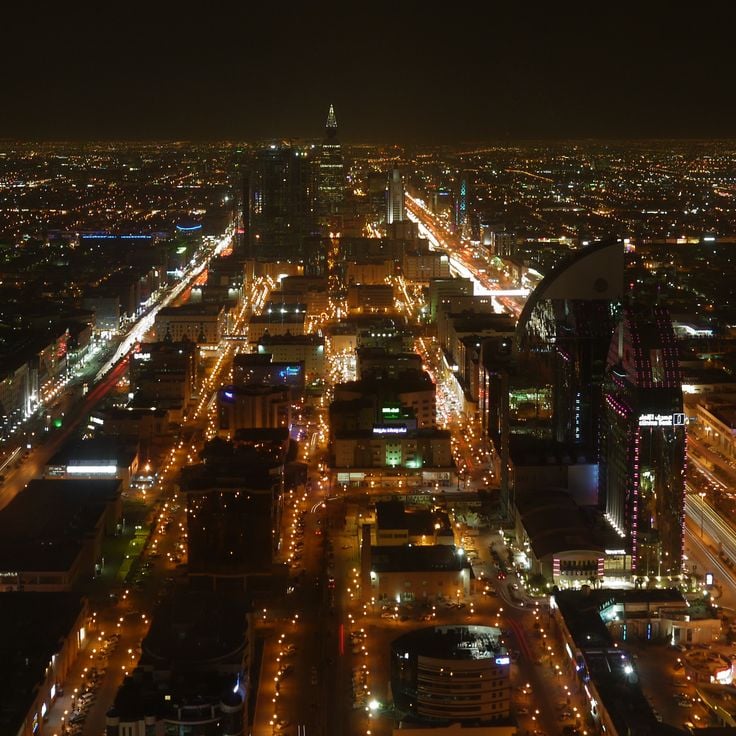
Riyadh, Saudi Arabia
RiyadhRiyadh is the capital of Saudi Arabia and home to 7 million inhabitants, serving as the political and financial center of the country. This city is located in the central part of the Arabian Peninsula and houses numerous historical sites, including the Masmak Fortress, which played a key role in the founding of the modern Saudi state. The metropolis combines contemporary architecture with traditional districts such as Diriyah, the original seat of the Saudi royal family, and features museums that document the history and culture of the region.
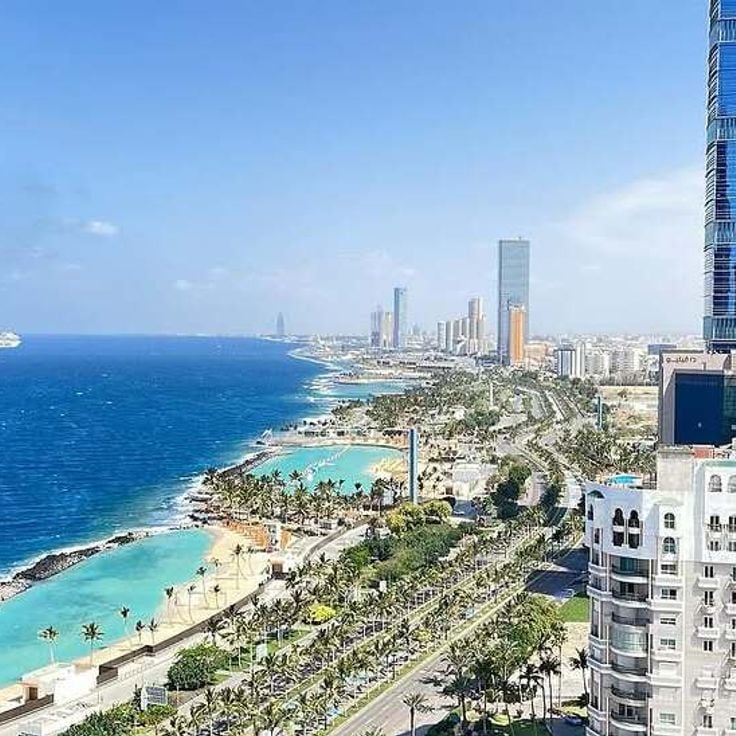
Jeddah, Saudi Arabia
JeddahJeddah is the second largest city in Saudi Arabia and the principal port on the Red Sea. This city serves as the gateway to Mecca and contains an old town recognized as a UNESCO World Heritage site. The historic center of Jeddah preserves traditional coral stone houses and ancient souks that reflect the trading history of the region. This port city connects centuries of trade traditions with modern development, offering insights into the commercial and cultural significance of Saudi Arabia along the Red Sea coast.
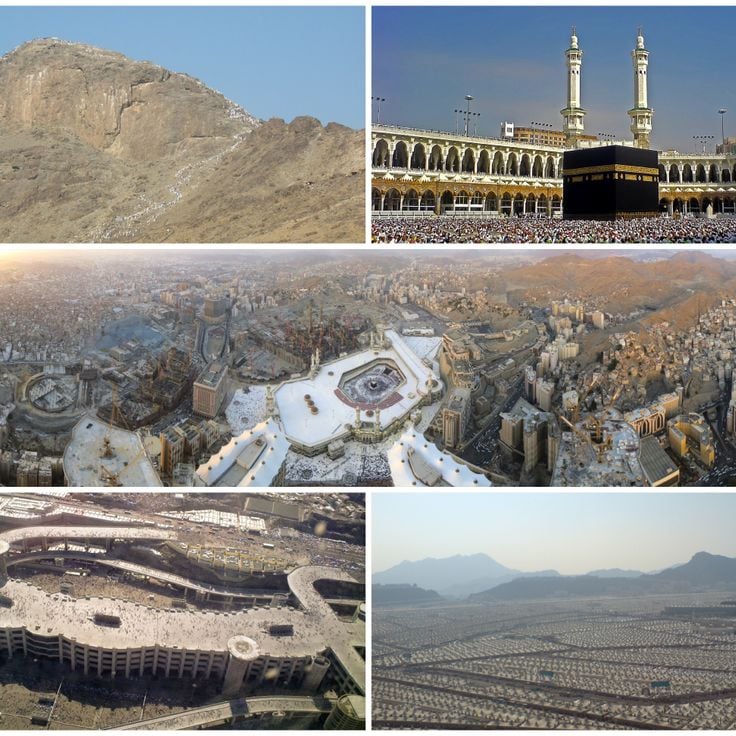
Mecca, Saudi Arabia
MeccaMecca is the holiest city in Islam and houses the Kaaba, a cube-shaped structure at the center of the Great Mosque (Al-Masjid al-Haram). This city receives millions of Muslim pilgrims each year who perform the Hajj or Umrah. The Kaaba serves as the direction of prayer for Muslims worldwide. The Great Mosque encircles the Kaaba and can accommodate over two million worshippers. The Zamzam well is also located within the mosque and provides water consumed by pilgrims. Mecca represents a central component of Saudi Arabia's historical and cultural sites.
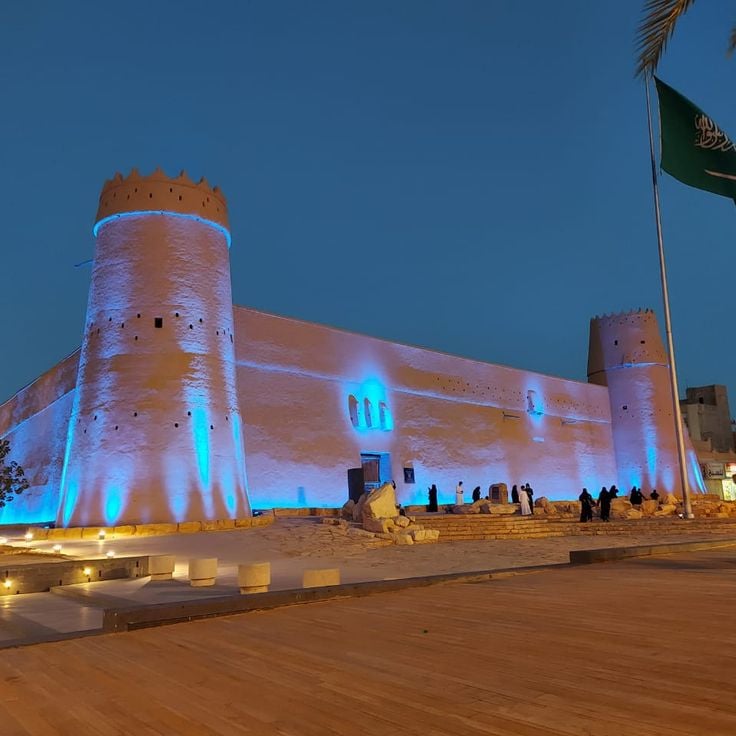
Riyadh, Saudi Arabia
Masmak FortressThe Masmak Fortress is a military construction made of raw earth dating from 1865, located in the center of Riyadh. This historic structure features walls 11 feet 6 inches (3.5 meters) thick and served as a fortified garrison. The fortress played a decisive role in the foundation of modern Saudi Arabia when it was captured by Abdulaziz Ibn Saud in 1902. Today, the Masmak Fortress houses a museum that provides insights into the history of the region and the development of the Saudi kingdom. It stands as one of the most significant historical buildings in the capital.
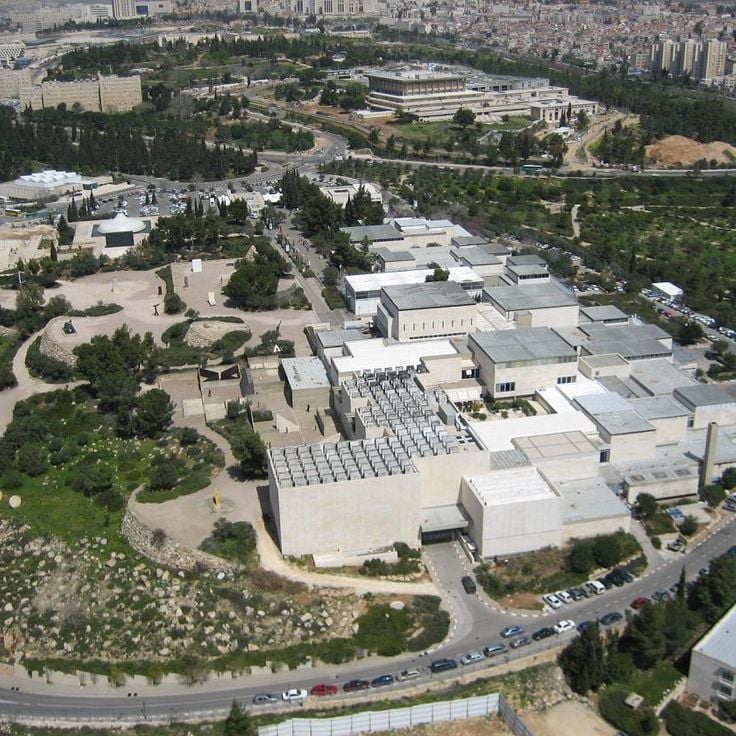
Riyadh, Saudi Arabia
National MuseumThis museum was established in 1999 and displays archaeological, historical, and ethnographic collections across eight galleries that document the history of Saudi Arabia from prehistoric times to the present day. The exhibitions include artifacts from the Nabatean sites of Al-Ula, religious objects related to the holy cities of Mecca and Medina, and traditional arts and crafts. The National Museum serves as a central institution for preserving and presenting the country's cultural heritage, including the rock art of Hail and other archaeological discoveries.
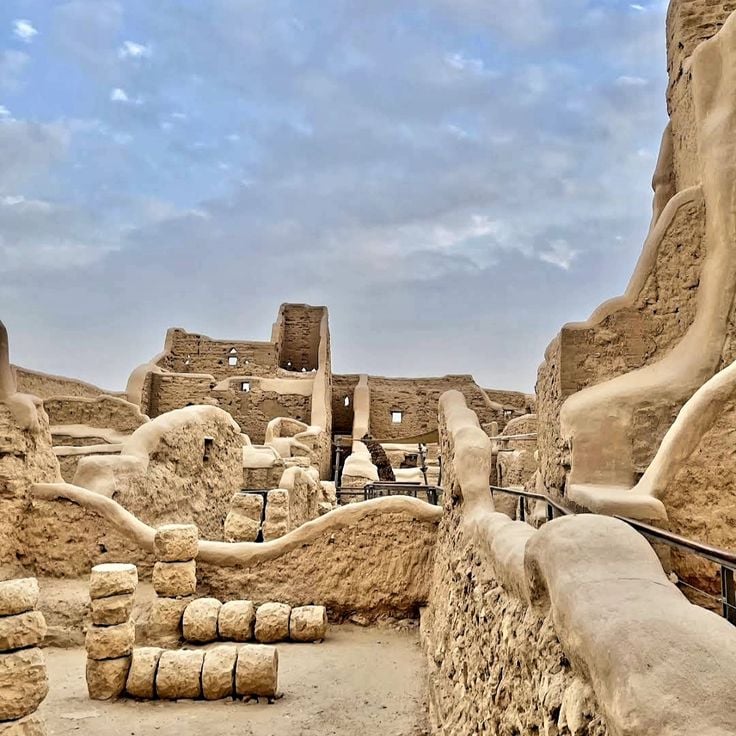
Riyadh, Saudi Arabia
Al-TuraifAl-Turaif is a historical site from the 15th century located in the Diriyah district of Riyadh. The complex consists of palaces and buildings constructed from mud brick, representing a notable example of Najdi architecture. Al-Turaif served as the political and administrative center of the first Saudi state and was inscribed as a UNESCO World Heritage site in 2010. The site includes several restored structures, among them the Salwa Palace and various residential buildings. This historical settlement documents the urban development of the region and the cultural traditions of Saudi Arabia from the 15th to the early 19th century.
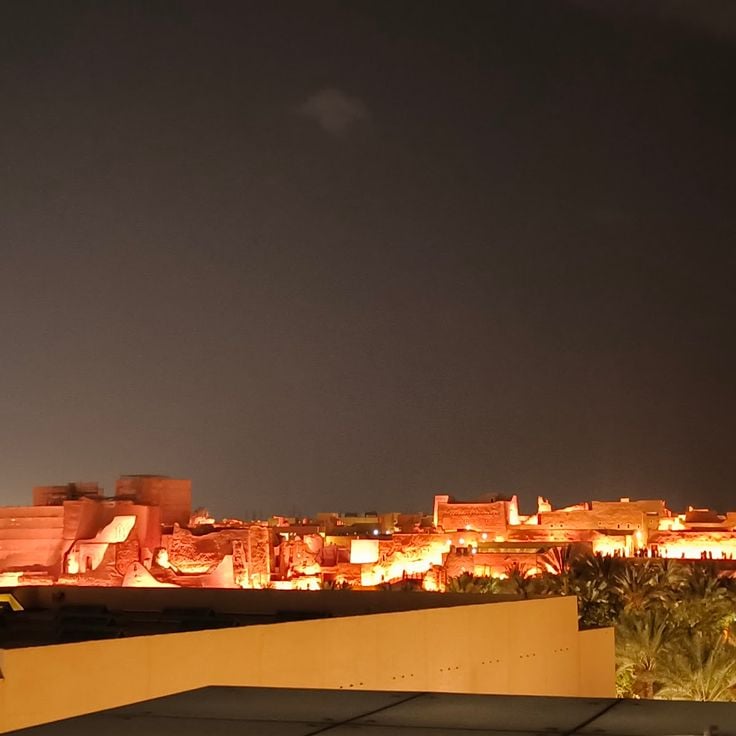
Riyadh, Saudi Arabia
Diriyah SoukThis covered market sits within the historic district of Diriyah, the first capital of the Saudi state. Diriyah Souk features shops offering local products, spices, and handicrafts that reflect traditional Saudi trading culture. The market serves as a cultural hub where visitors can purchase authentic goods and experience the commercial traditions of the region. As part of the larger Diriyah historic complex, this souk contributes to the preservation and presentation of Saudi Arabia's cultural heritage. The architecture and layout of the market follow traditional Najdi building principles.
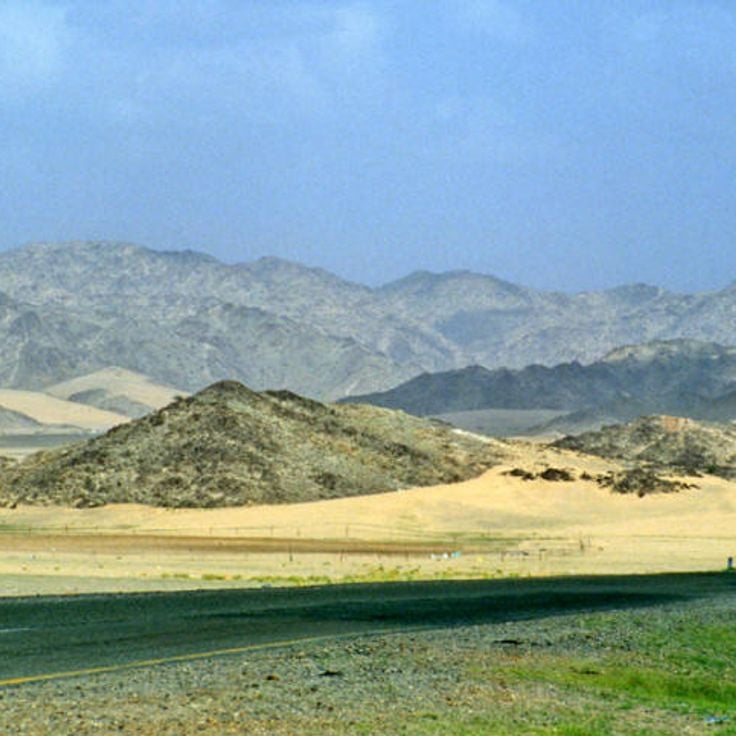
Taif, Saudi Arabia
TaifThis agricultural center sits at an elevation of 5900 feet (1800 meters) in the mountainous region of Saudi Arabia and is known for its rose cultivation and fruit orchards. Taif serves as an important location for the production of rose water and various fruits that thrive in the cooler climate. The city combines traditional farming practices with its role as a summer retreat. Taif complements the historical and cultural sites of Saudi Arabia through its agricultural significance and mountainous setting.
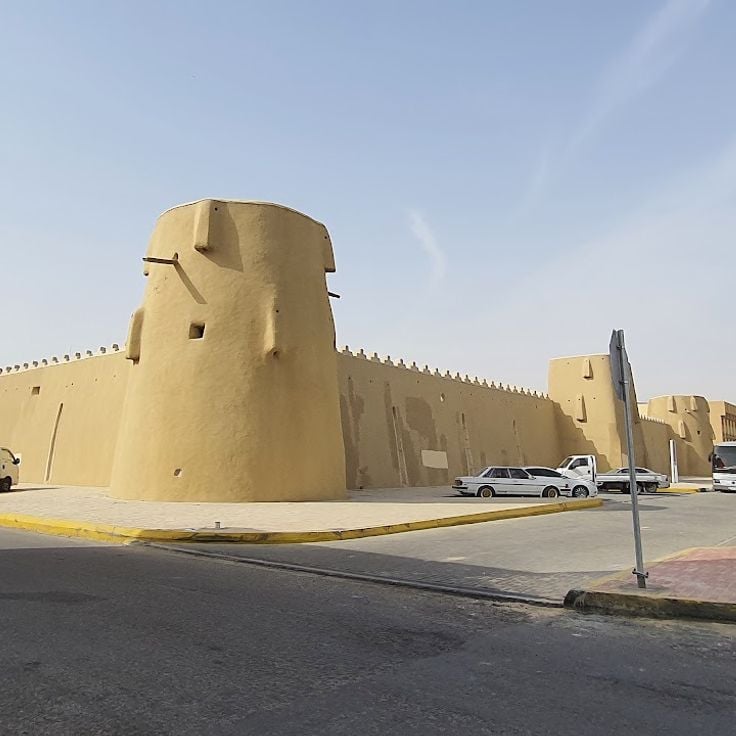
Hofuf, Saudi Arabia
HofufHofuf serves as the commercial and agricultural center of the Al-Ahsa oasis, one of the world's largest oases. This city encompasses extensive date palm plantations, natural water springs, and traditional irrigation systems that have supported agriculture in this region for centuries. Hofuf connects historical trade routes with modern markets and provides insights into the agricultural practices of eastern Saudi Arabia and the importance of oasis culture to the development of human settlement in arid environments.
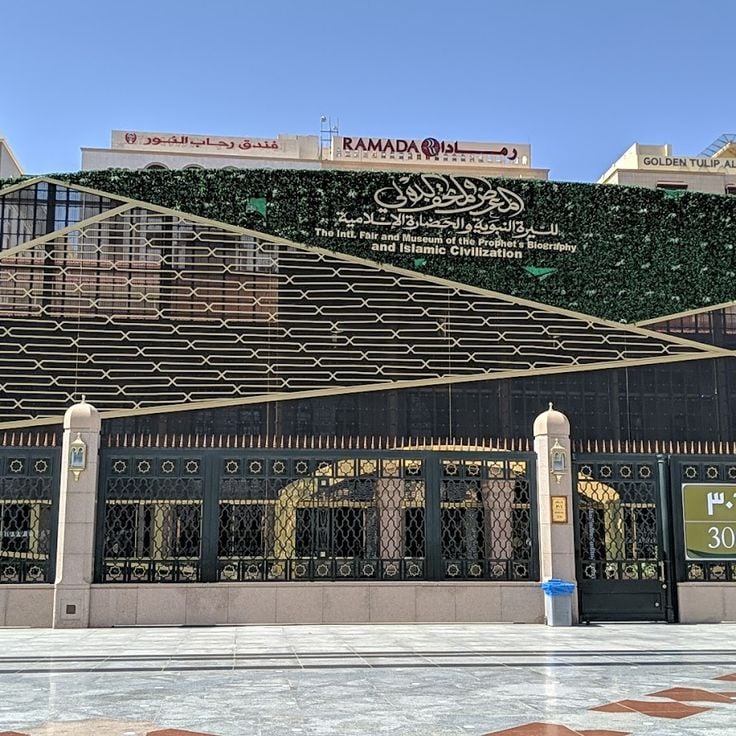
Saudi Arabia
Museum of Islamic CivilizationThis museum houses a permanent collection of artifacts, manuscripts, and objects documenting the historical and cultural development of Islamic civilization. The Museum of Islamic Civilization presents religious texts, scientific instruments, ceramics, and other exhibits from various periods of Islamic history. The exhibition includes objects related to astronomy, mathematics, medicine, and architecture that illustrate the contribution of the Islamic world to global culture. The collection complements the religious and historical sites of Saudi Arabia by conveying the cultural heritage of Islamic civilization.
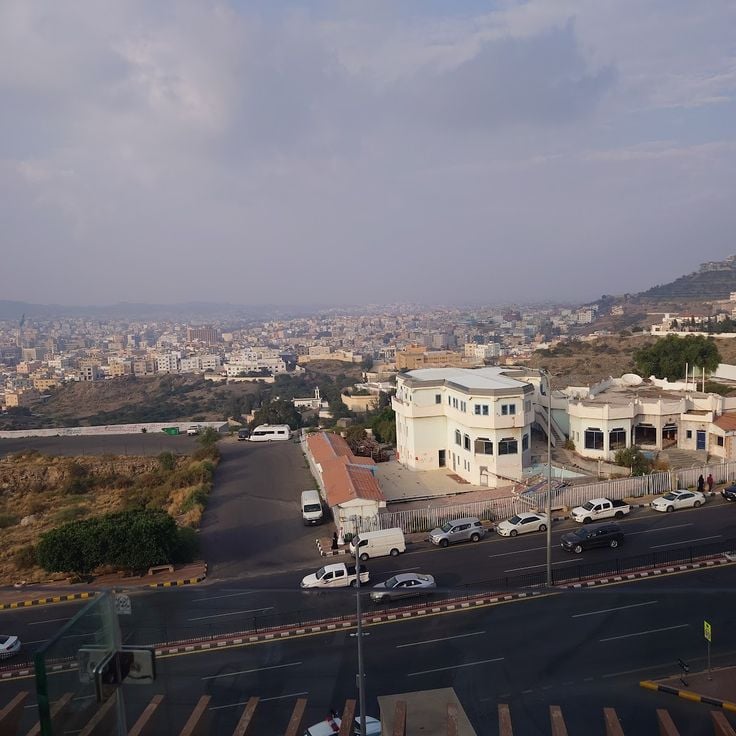
Asir Province, Saudi Arabia
Asir National ParkThis national park spans 450,000 hectares (1,737 square miles) in Asir Province and encompasses forests, rock formations, and deep valleys. The park's mountains reach elevations of 10,000 feet (3,000 meters) and support various tree species, including junipers and acacias. The terrain provides habitat for numerous wildlife species and features several climate zones, from the cooler highlands to the warmer valleys. Asir National Park protects a significant portion of Saudi Arabia's natural environment and complements the country's historical and cultural sites.
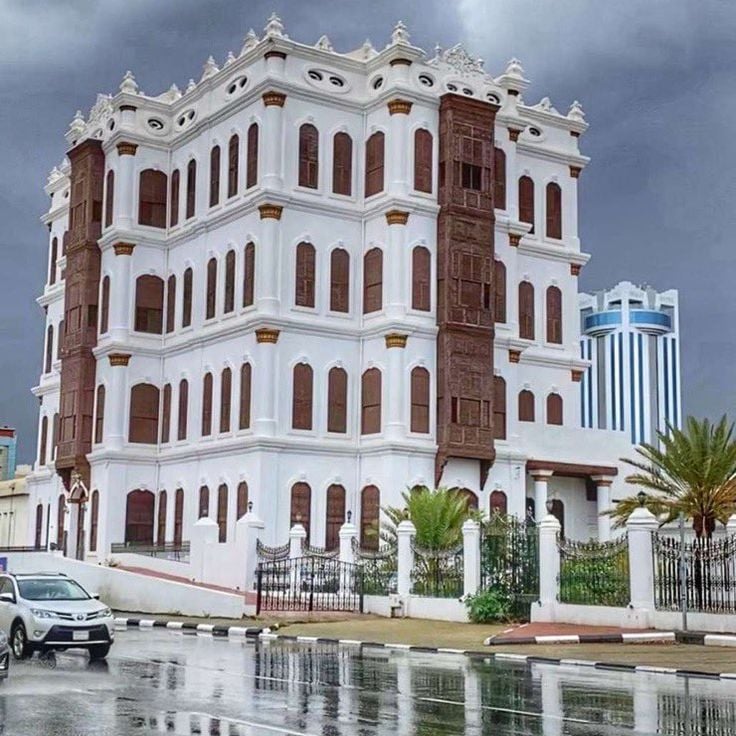
Taif, Saudi Arabia
Taif LakeThis natural lake is located in the Taif mountains and maintains its water level throughout the year. It is surrounded by native vegetation and serves as a stopover for migratory birds. Taif Lake adds a natural element to the historical and cultural sites of Saudi Arabia in this region known for its elevation and moderate climate. The lake sits at approximately 5,600 feet (1,700 meters) above sea level and provides habitat for various bird species during their seasonal migrations. The surrounding vegetation differs from the typical desert landscape found elsewhere in the country.
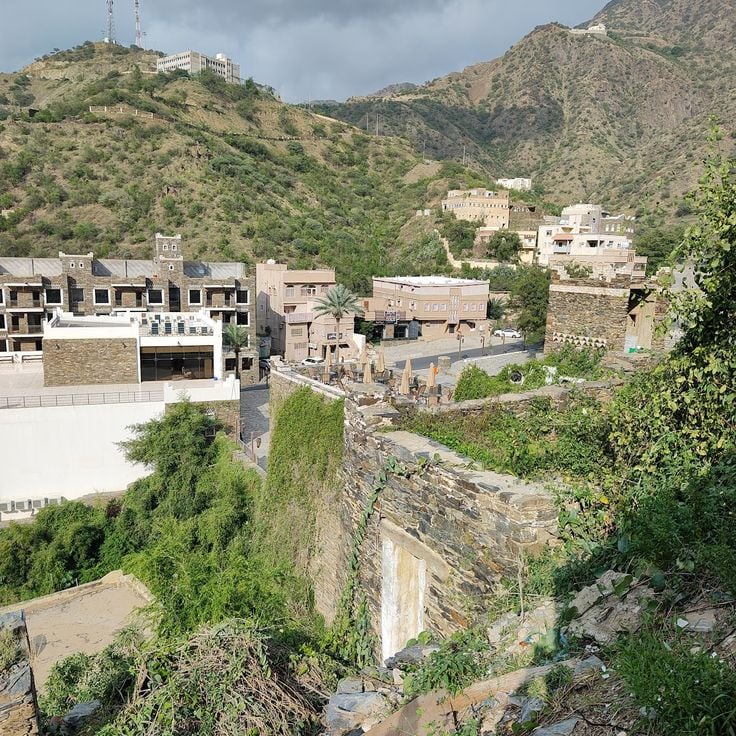
Asir Province, Saudi Arabia
Rijal AlmaRijal Alma is a village in the Asir Mountains constructed in the 8th century. This settlement displays characteristic defensive architecture with multi-story buildings made of stone and mud. The structures were built using traditional regional construction methods and served to protect inhabitants. This historic village represents one of the notable cultural sites of Saudi Arabia, documenting the architectural traditions and way of life of mountain communities over more than twelve centuries.
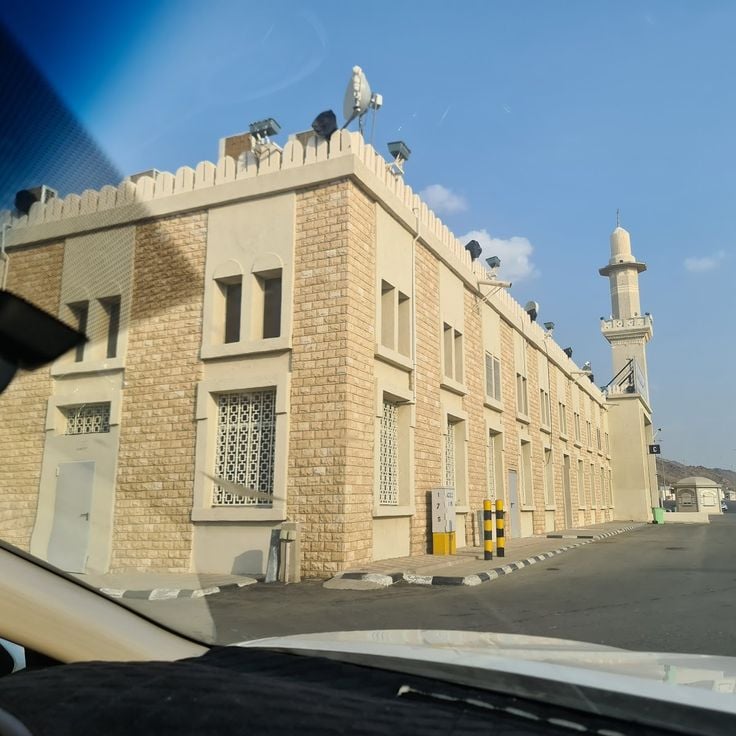
Mecca, Saudi Arabia
MuzdalifahThis valley between Mount Arafat and Mina is a religious site visited by pilgrims during the Hajj. Muzdalifah serves as a resting place where pilgrims spend the night in the open and collect stones for the symbolic rituals in Mina. The site includes the Mashar al-Haram Mosque and facilities to accommodate the millions of pilgrims who stop here annually during the pilgrimage. The valley lies between the holy mountains and forms part of the prescribed Hajj route from Arafat to Mina.
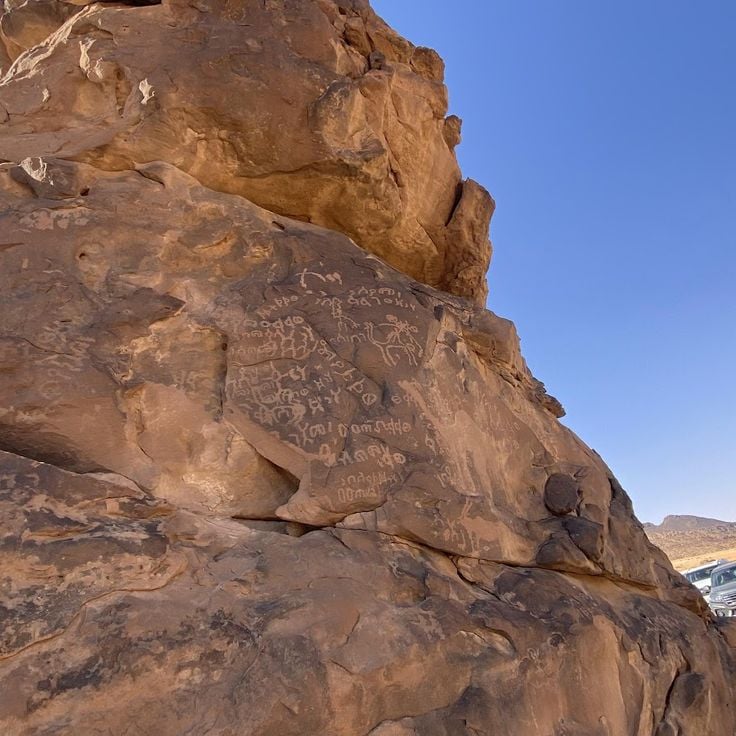
Hail, Saudi Arabia
Rock Art of JubbahThis archaeological site displays more than 5,000 petroglyphs on the rock faces of Jebel Umm Sinman, depicting humans and animals dating from the Neolithic period. The carvings document the life and environment of prehistoric communities in the Hail region and form part of Saudi Arabia's extensive cultural heritage, which ranges from holy cities to Nabatean archaeological sites. The representations provide insights into the fauna and human activities of a time when the Arabian Peninsula had a wetter climate.
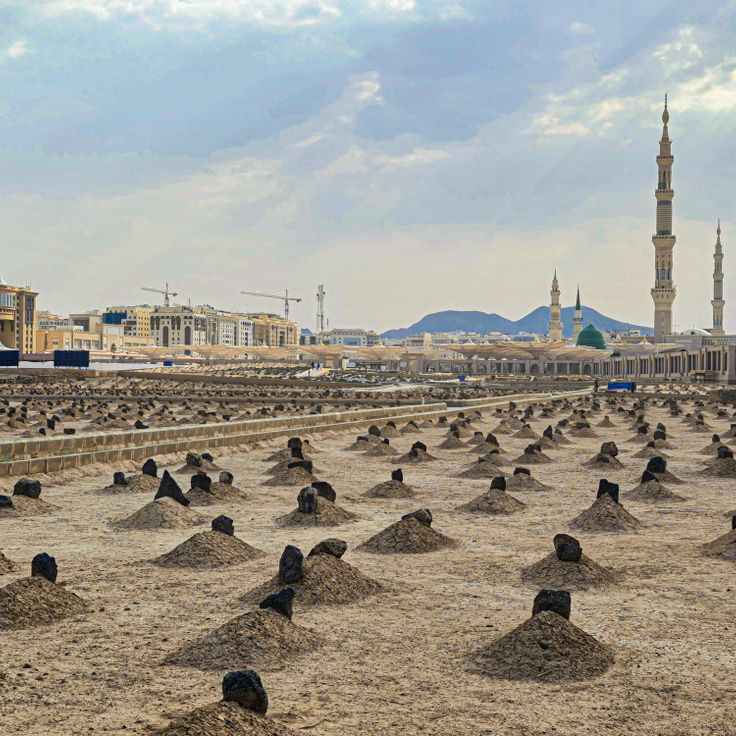
Medina, Saudi Arabia
Al-Baqi CemeteryThis cemetery is the oldest Muslim burial ground in Medina, founded in the 7th century. Al-Baqi serves as the resting place for members of the Prophet Muhammad's family, numerous Islamic scholars, and companions. The cemetery is located east of the Prophet's Mosque and holds significant religious importance in Islamic history. Thousands of historical figures are buried here, including four of the Rightly Guided Caliphs and many early Muslims who contributed to the spread of the religion.
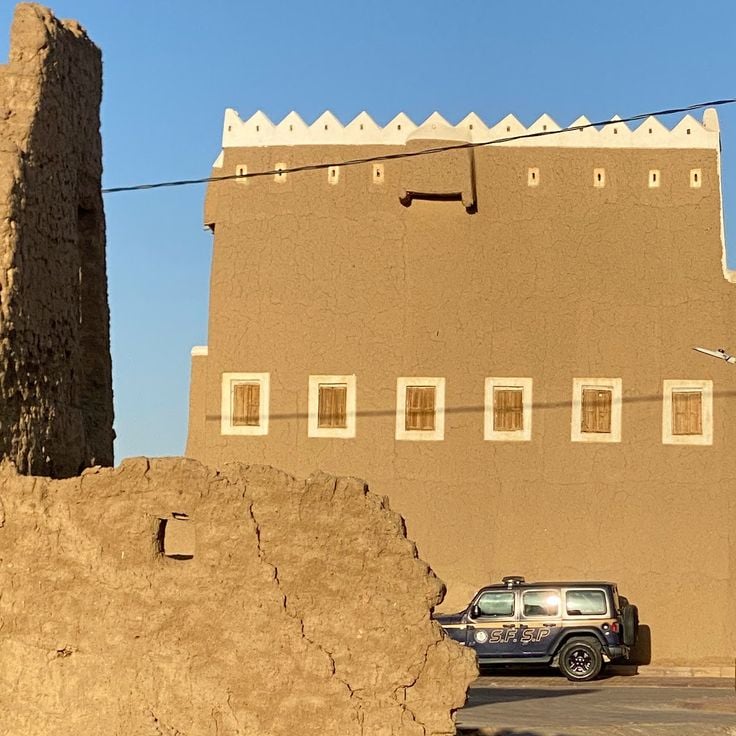
Tayma, Saudi Arabia
TaymaTayma is a historic oasis along ancient trade routes in northwestern Arabia that has been inhabited for thousands of years. The archaeological sites of this settlement include Bir Haddaj, an 85-foot (26-meter) deep well dating from 1200 BCE that ranks among the oldest known water installations in the region. The oasis preserves remnants of city walls and Nabatean structures that document its importance as a junction between Mesopotamian and Arabian civilizations. Tayma appears in Assyrian and Babylonian texts and served as a temporary residence for Babylonian king Nabonidus in the sixth century BCE. The archaeological findings at this oasis enhance understanding of pre-Islamic history in Saudi Arabia and the development of urban centers along the incense trade route.

Mecca, Saudi Arabia
Zamzam WellThe Zamzam Well is a natural spring within the enclosure of the Great Mosque in Mecca and represents one of the religious and historical sites of Saudi Arabia. This sacred spring has been revered by Muslims for centuries and holds a central role in the pilgrimage to Mecca. Pilgrims drink the water from this well, which is considered blessed. The Zamzam Well is located in close proximity to the Kaaba and forms an essential part of religious practice during Hajj and Umrah.
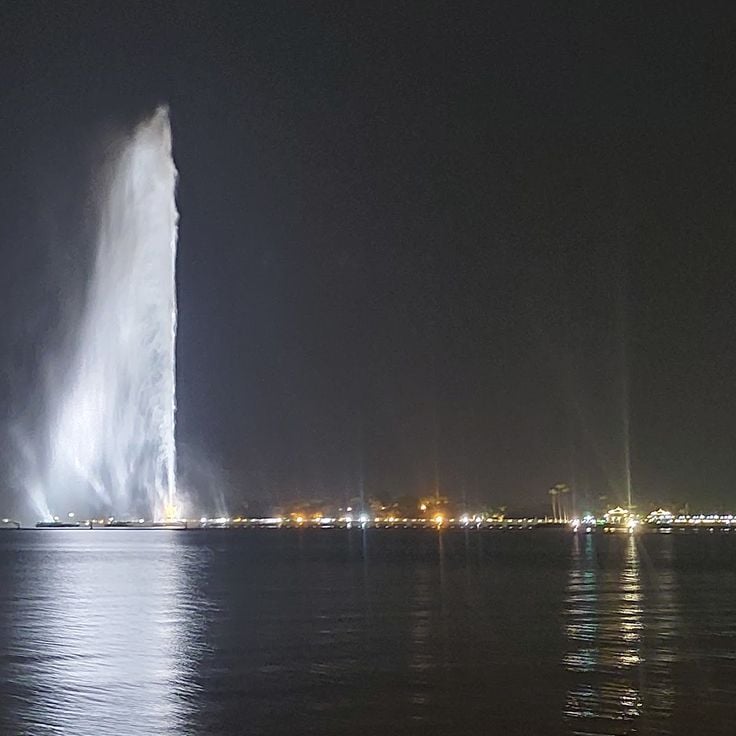
Jeddah, Saudi Arabia
King Fahd FountainThis marine fountain on the Jeddah corniche shoots water 312 meters (1,024 feet) into the air, making it one of the tallest of its kind in the world. The King Fahd Fountain was built in 1983 and uses seawater from the Red Sea pumped through three large nozzles at high velocity. The fountain is illuminated at night and visible from various points along the coastal promenade. As a technical landmark of Jeddah, this installation complements the historical and religious sites of Saudi Arabia with a modern element of urban architecture on the Red Sea.
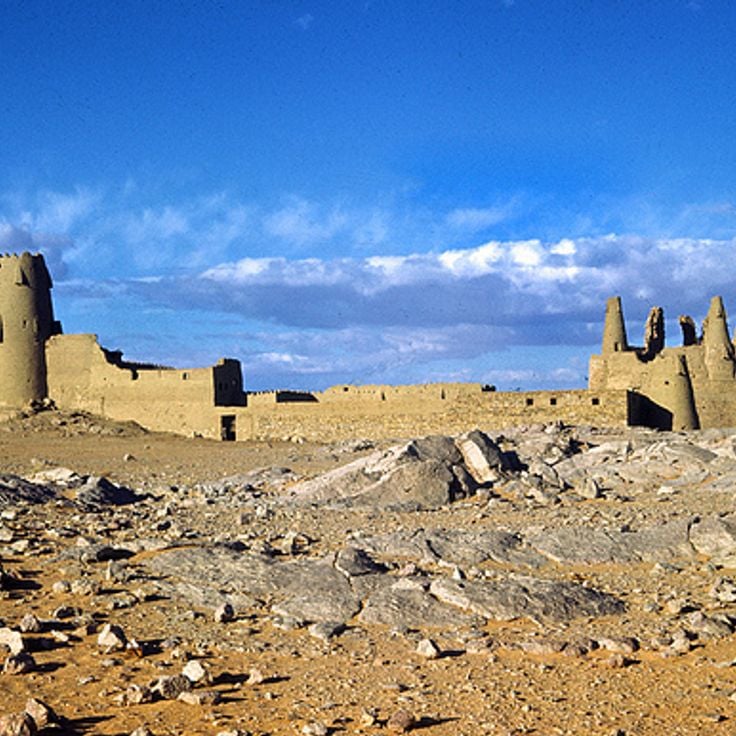
Dumat al-Jundal, Saudi Arabia
Qasr MaridThis first-century fortress sits on a hill in the oasis of Dumat al-Jundal and was constructed from stone and mud. Qasr Marid belongs to the historical and cultural sites of Saudi Arabia that preserve evidence of ancient settlements and trade routes. The structure consists of multiple levels and towers that served as a military and administrative outpost over the centuries. From the walls of this fortress, visitors gain views over the surrounding oasis and historic town.
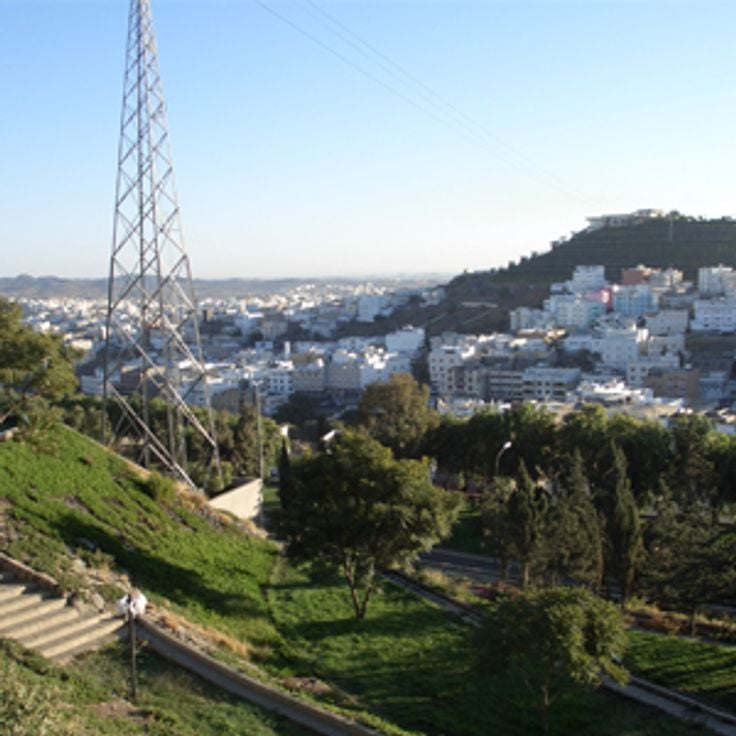
Abha, Saudi Arabia
AbhaAbha is the capital of Asir province and sits at an elevation of 7,218 feet (2,200 meters) in the mountains of southwestern Saudi Arabia. This city features traditional architecture and a cooler mountain climate that sets it apart from other regions of the country. Abha serves as a gateway to the natural areas of the Asir mountains and complements Saudi Arabia's religious and historical sites with a regional perspective on traditional building methods and mountain landscapes.
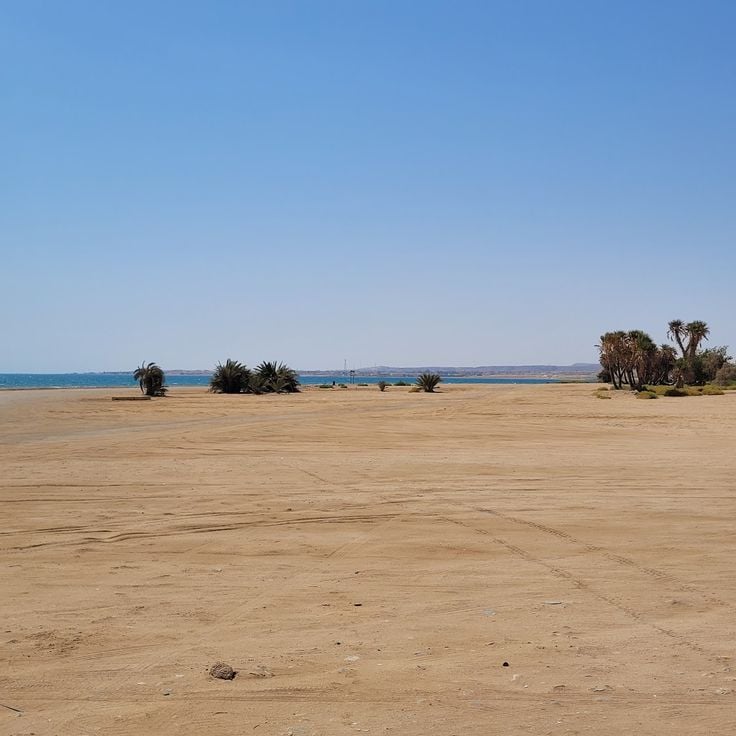
Tabuk, Saudi Arabia
NeomThis planned city with a budget of $500 billion extends across 26,500 square kilometers (10,230 square miles) along the Red Sea coast in Tabuk Province. Neom is designed as a technological hub to integrate artificial intelligence, renewable energy, and sustainable development. The project includes various development zones encompassing urban areas, industrial facilities, and tourism infrastructure. The city connects three countries and provides access to international trade routes through the Red Sea.
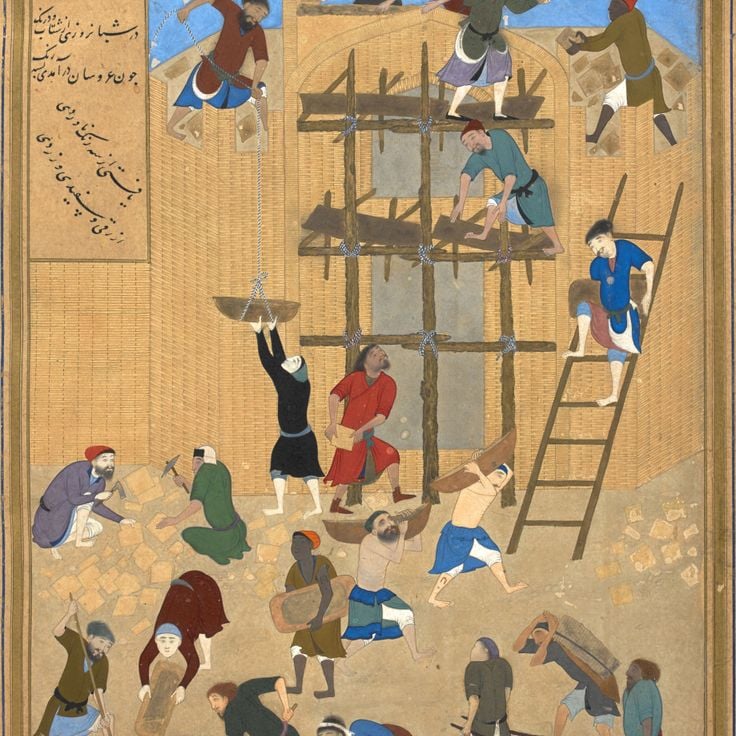
Mecca, Saudi Arabia
HiraThis cave at the summit of Mount Nour, at an elevation of 2,100 feet (640 meters), is a significant location in Islamic history. The Prophet Muhammad retreated to this natural cave for meditation before receiving his first revelation. Located northeast of Mecca, the cave is now an important pilgrimage destination for Muslims seeking to experience the spiritual importance of this site. The ascent to the summit requires physical effort but offers insight into the religious practices of early Islam.
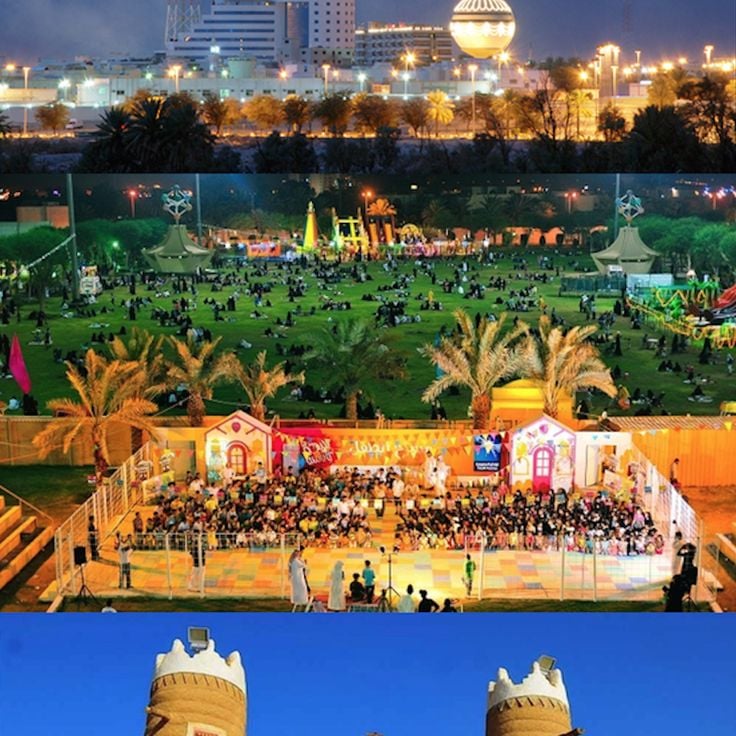
Qassim, Saudi Arabia
QassimQassim is an agricultural province in Saudi Arabia that produces about 20 percent of the country's wheat. This region is known for its extensive date palm plantations and traditional cultural festivals. The province combines agricultural importance with historical sites and lies in the central part of the country, where it plays a significant role in Saudi agriculture and contributes to the historical and cultural heritage of Saudi Arabia.
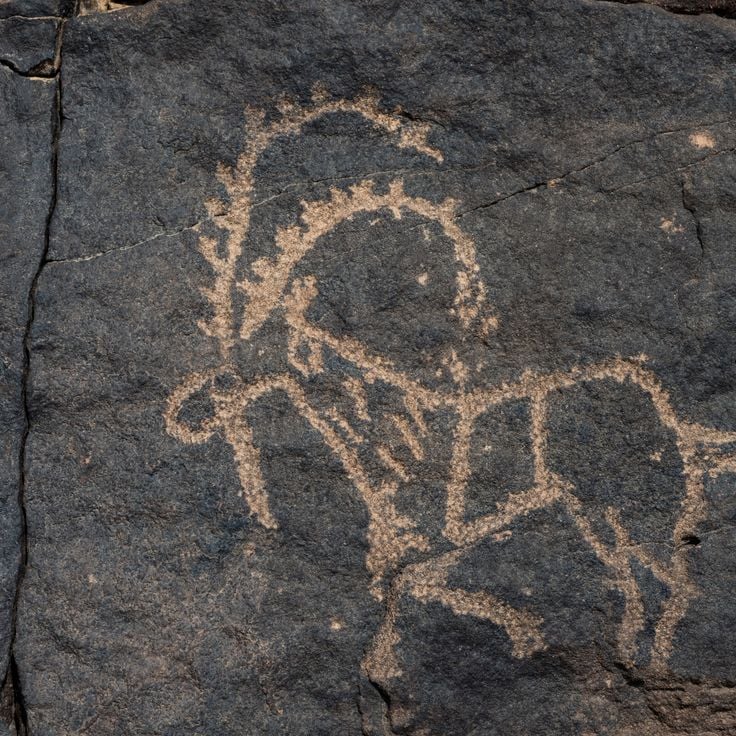
Najran Province, Saudi Arabia
HimaHima is an archaeological site spanning 215 square miles (557 square kilometers) containing more than 550 petroglyphs and rock inscriptions documenting 7000 years of history. This cultural landscape shows human settlement since the Neolithic period through depictions of hunting scenes, animals, and inscriptions in several ancient scripts. The petroglyphs document the transition from hunting to herding and provide insights into prehistoric trade routes across the Arabian Peninsula. This site stands among the historical and cultural locations of Saudi Arabia that preserve the region's archaeological heritage.